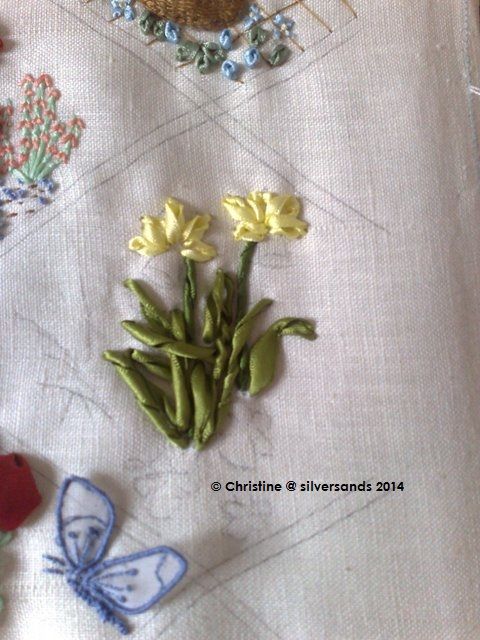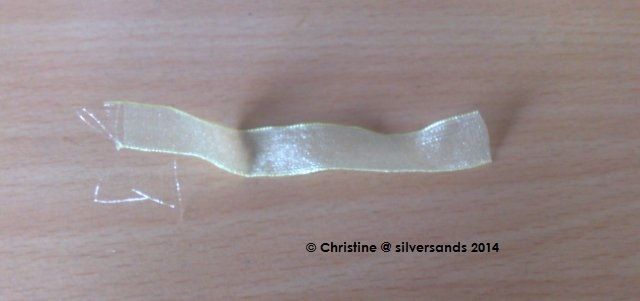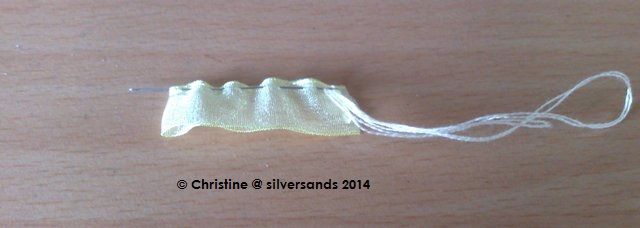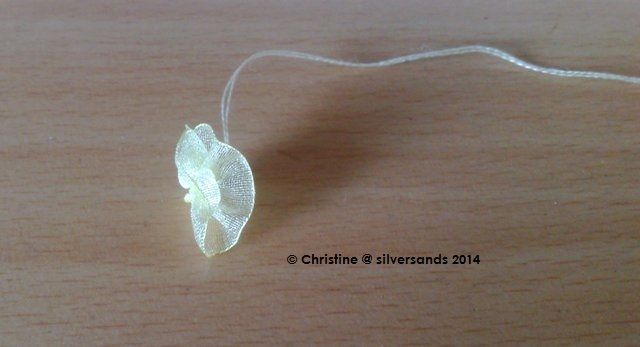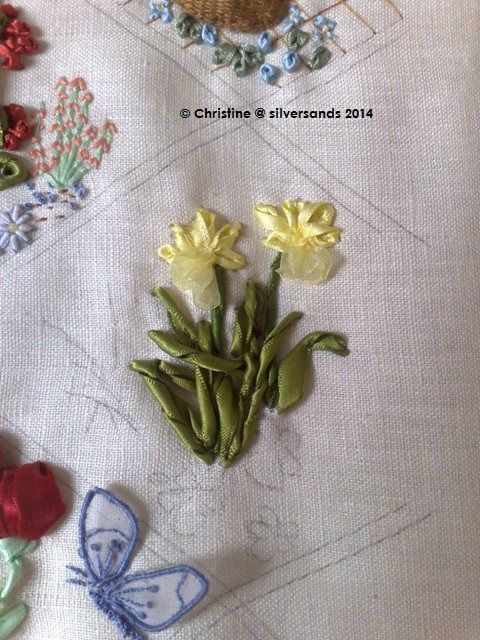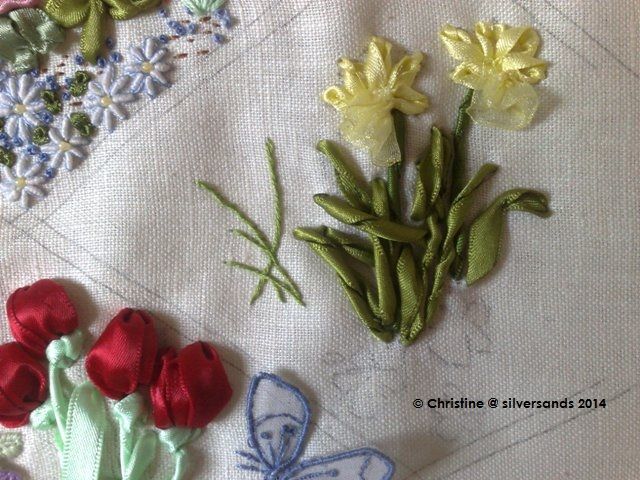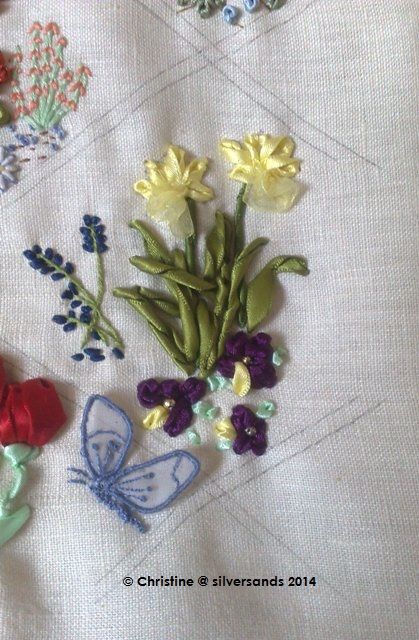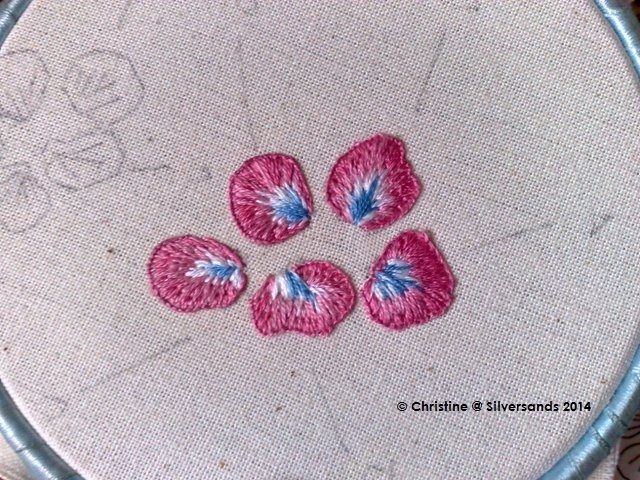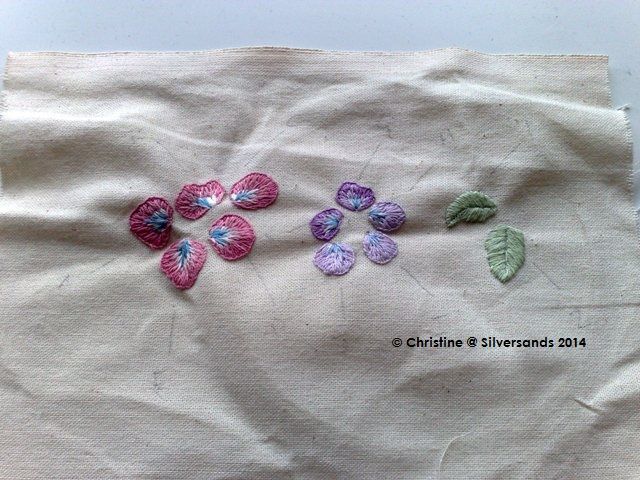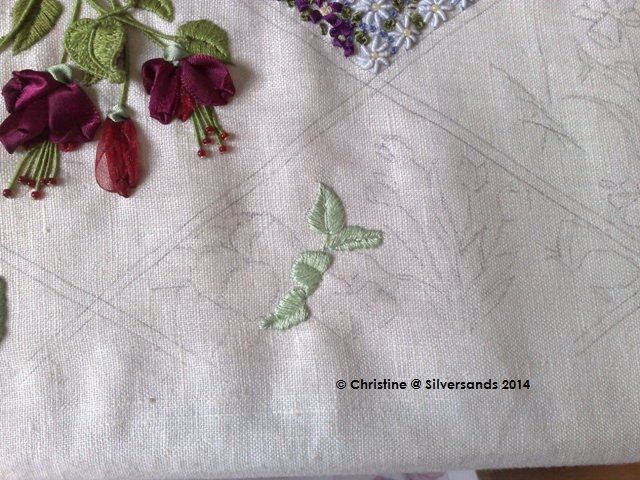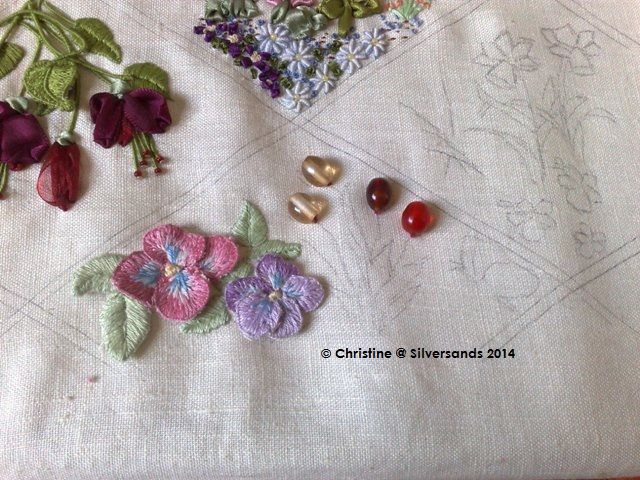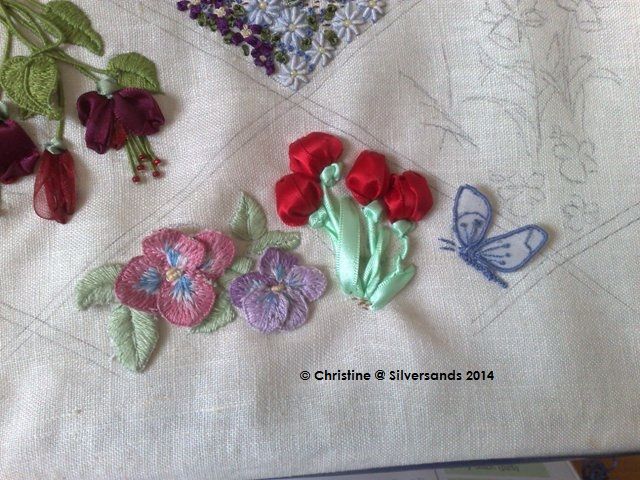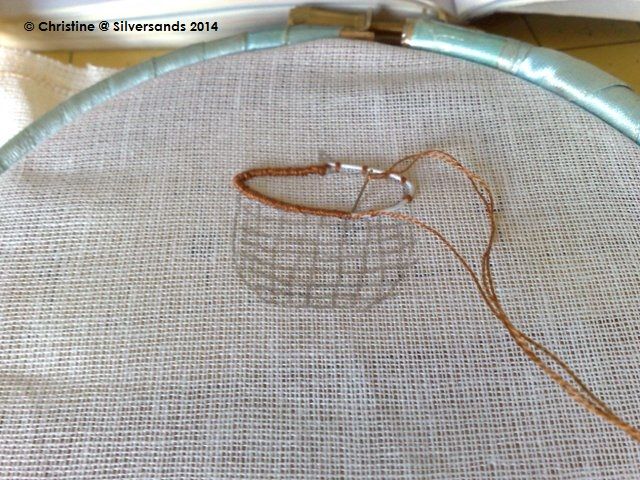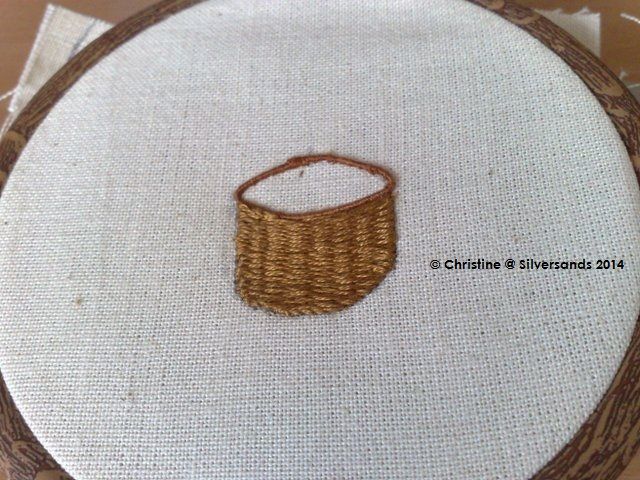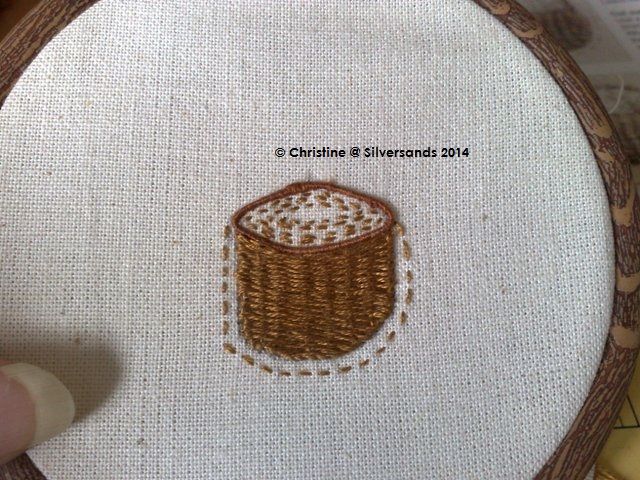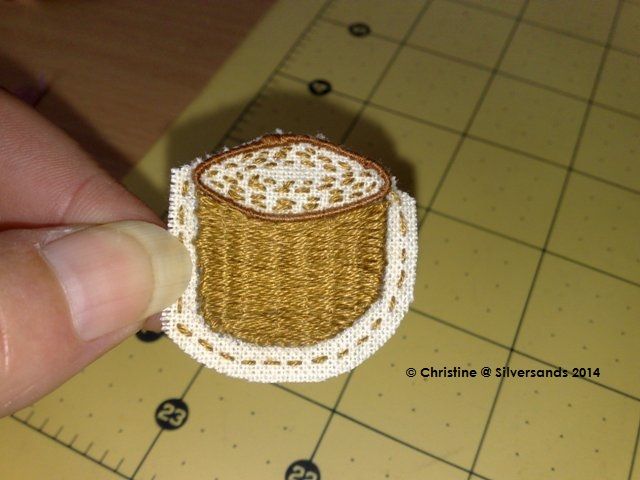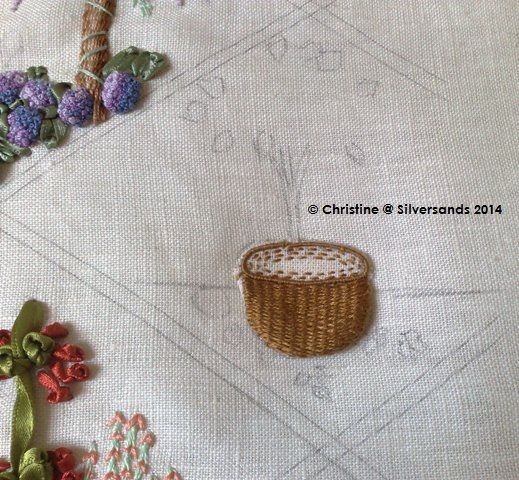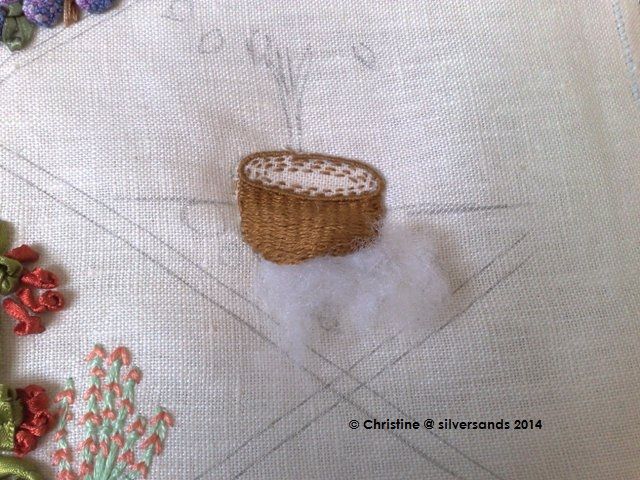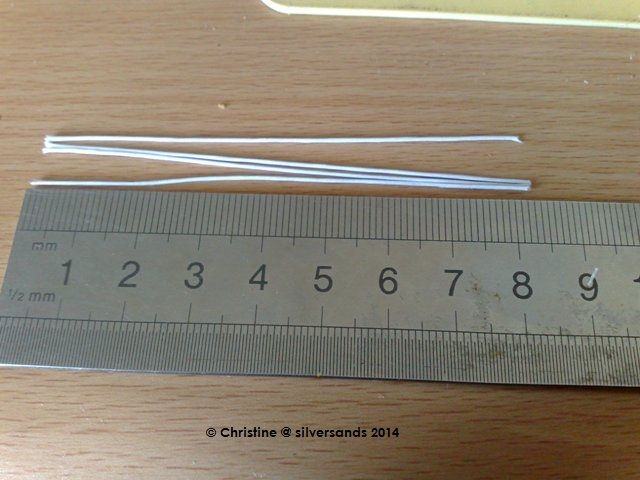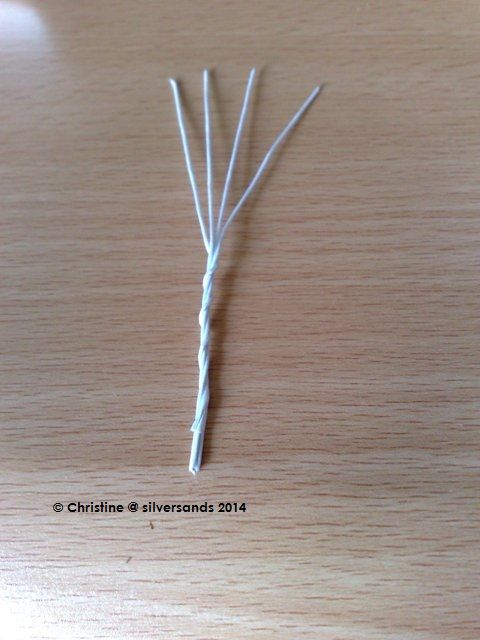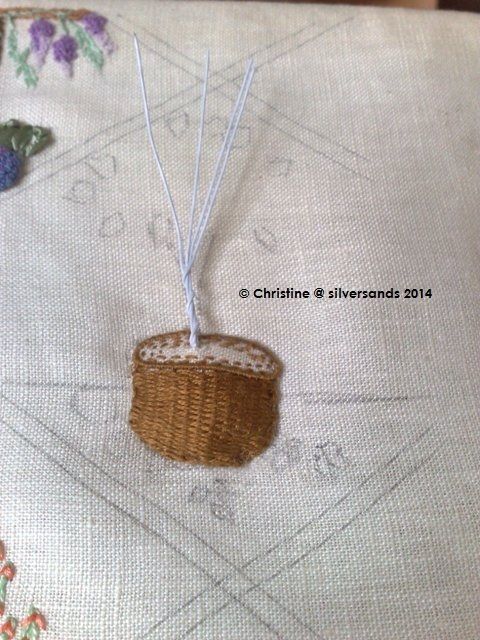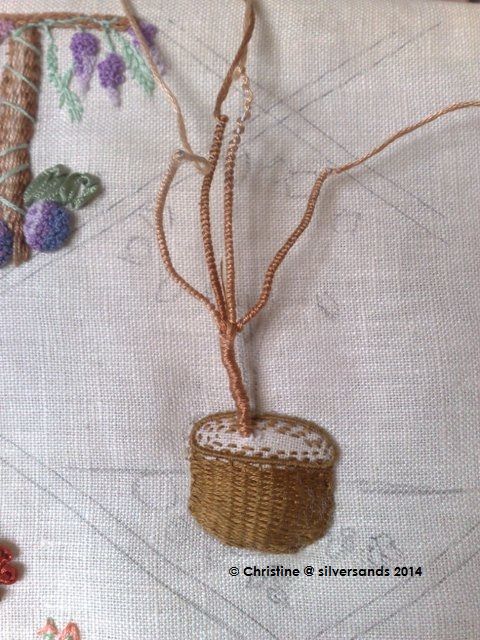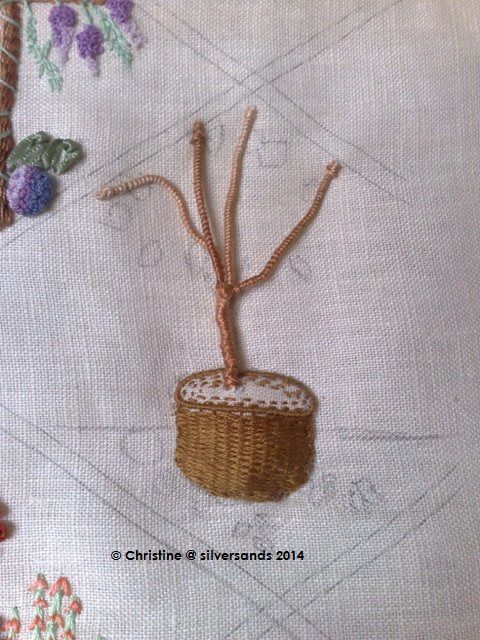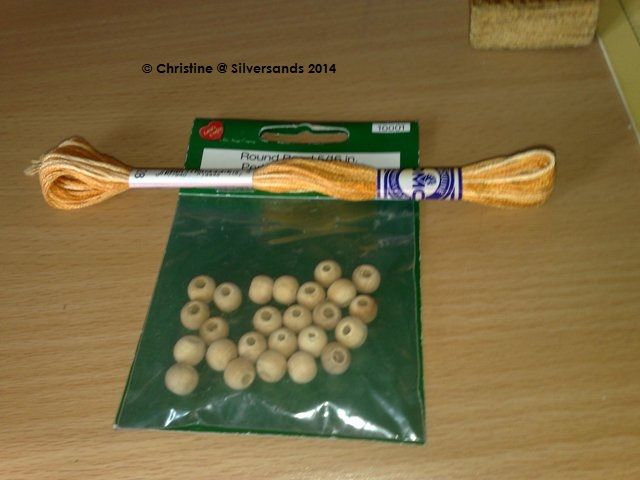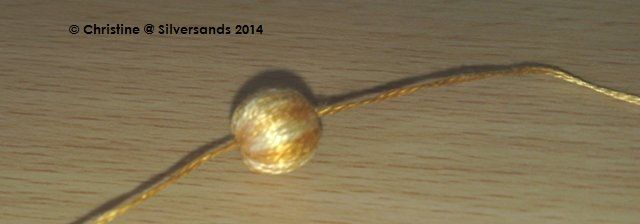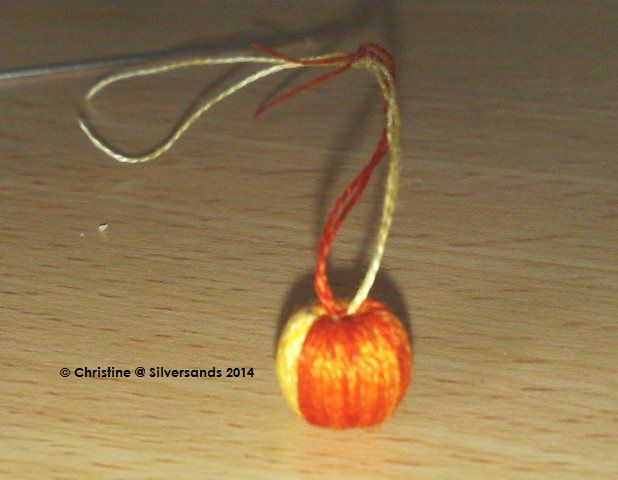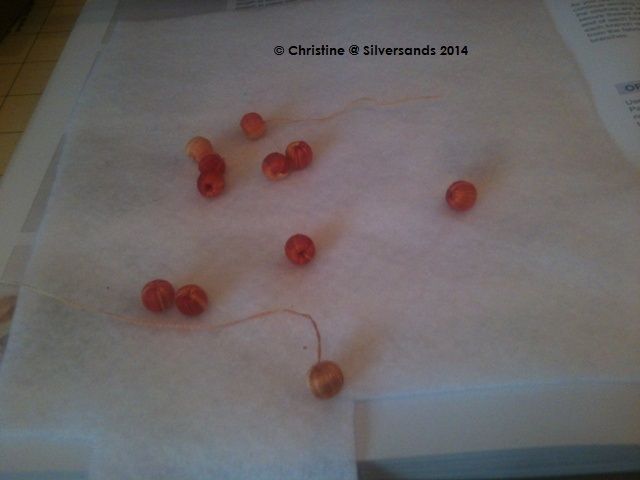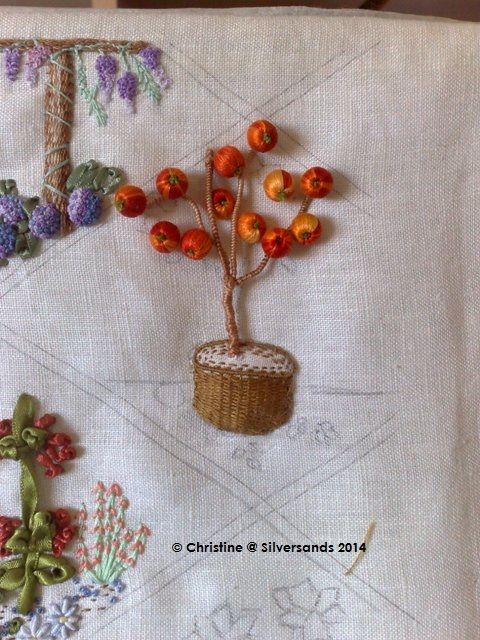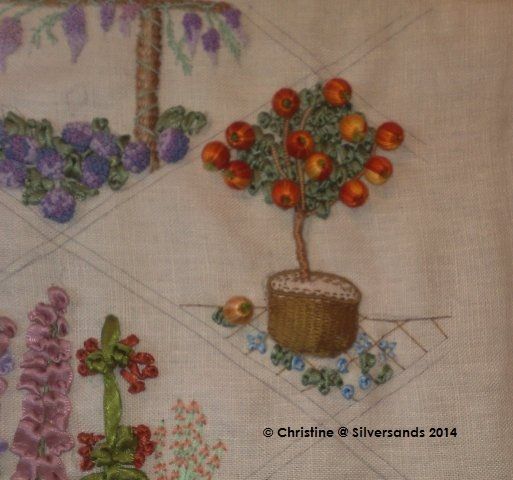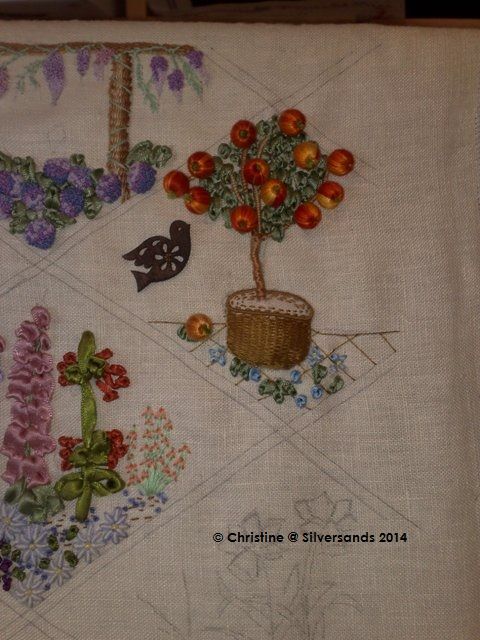Panel 9 - Fox gloves.
DMC - 955 / 470 /793 /3717 / 3341
Anchor 300
Cake wire / Netting or Organza scrap / Yellow seed bead.
Ribbon: GB Pink / purple / sage / dark olive green.
The first job is to make the foxgloves, starting with Sage ribbon I made made a long straight stitch on both foxgloves to make the stems. Then I used the purple and pink ribbon to make ribbon stitch flowers, changing back to sage green to make 2 detached chain stitches for the big leaves at the bottom of each fox glove ending with this

Some of the ribbon stitches were a little bit more poufy than I would have liked but with synthetic ribbon its a pain the in neck to get the ribbon to stitch through its self, with pure silk ribbons they are softer and you don't have this problem. The problem you have is that if your in the UK, silk ribbon is expensive and hard to get hold of and in these current climes you have to use what you can easily source. Well that's my excuse anyway.
So the next part is to work the dragonfly. Tracing the wings on to netting I mounted it in the hoop and then couched wire to the shape of the wings and then overcast the wire like this

As you can see, I drew the wings on grease proof (makes cheap excellent tracing paper) and then laid the netting over the top and mounted both the grease proof and the netting in to the hoop. This gave me the outline of the wings which you can't trace on netting. I do have some organza scraps but couldn't find them so had to use netting. Now this looks scrappy to me but can be tidied up later. The next job was to cut the wings out just like in the previous panel when doing wired stump work, cutting close to the stitching angling the blades of the scissors so that the thread is not cut. I then picked out with a needle the little bit of grease proof still left in the wings and so we end with this.

I cut the 2nd from the top wing slightly too short but once this is fixed to the ground fabric I can secure it better.
The next job is to poke the wing tails through the ground fabric and secure the tails on the back, then faff about with the wings till they are right. I then used 3713 to stitch 3 long stitches for the body between the wings and overcast them to form the body, 3 French knots for the head in 3713 and 2 short straight stitches for the antenna ending with this

Now this looks a bit to scrappy for my liking and really needed organza for the wings, I may in the future go back and redo this dragonfly. You can also in this picture see the start of the rain daises which we'll get to in a while.
The next job is the wild dagga, I made a long straight stitch in dark olive ribbon, and made a few French knots in the middle and near the top of the stalk with the same olive ribbon, and this was a total nause as the ribbon was tough but I got there. I then changed to fiery orange ribbon and made pistil stitch leaves, which basically is French knots on a stalk. As we have covered these stitches before I never photo'd them.
Next came the small plant, so I used 955 (6 strands) and made straight stitches for the stems and couched them down, I then changed to 3341 and made short stab stitches ending with this.
You see both the wild dagga here and the start of the small plant.
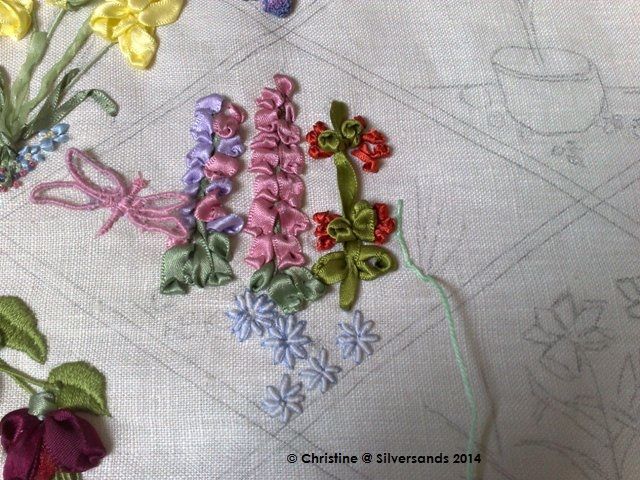

rain daises are just bullions with a detached chain stitch edging

10 wrap bullions we covered before as well as detached chain.

next came rock roses, now we have done these before as well, I used purple ribbon to make 4 flat ribbon stitches for each flower then filled the center with Anchor 300 and French knots. I then used some brown thread to scatter seed stitches around the base of all the flowers, and then used 793 to scatter French knots around the base, rock roses and rain daises.
the rain daises called for a bead in the center, I first tried one of my small gold ones,
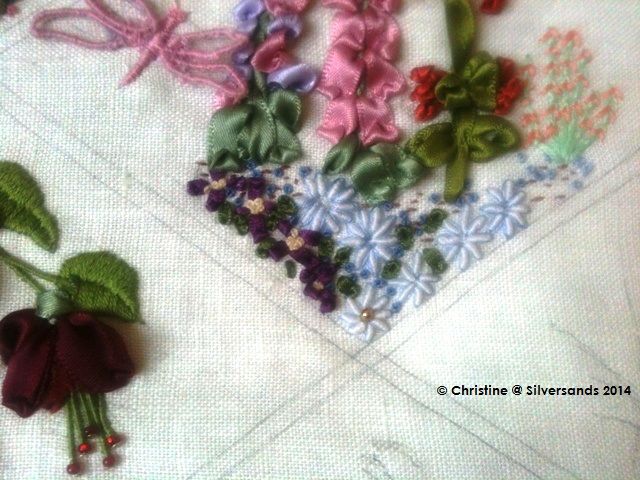
but it looked too big to me so i changed it for small yellow seed beads. I then put some small green ribbon stitches in to denote leaves.
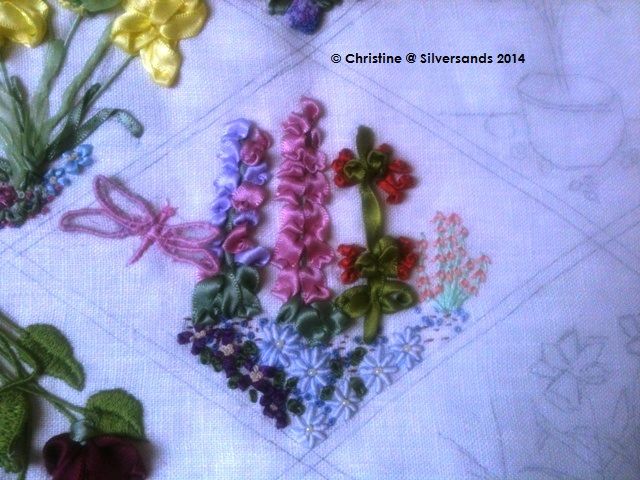
i thought these looked better so we now end with this.


So not the best of the panels I think, but I am learning this with you as we go along and some techniques I am better at than others.
next time we move on to panel 10 - An orange tree & forget me knots.
